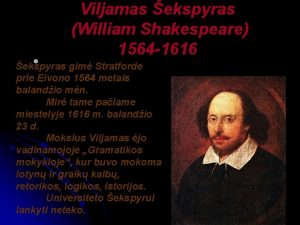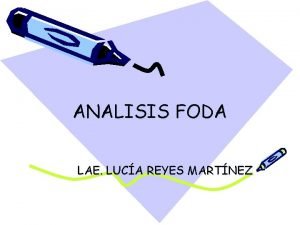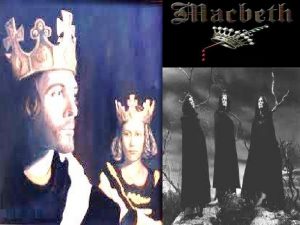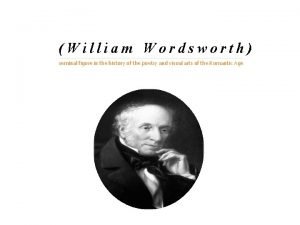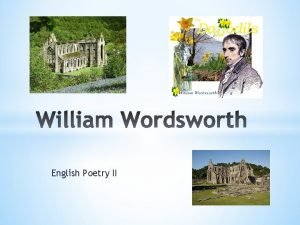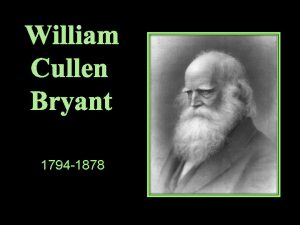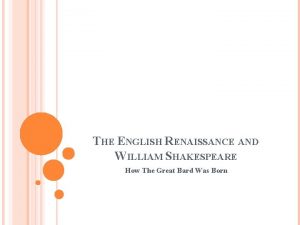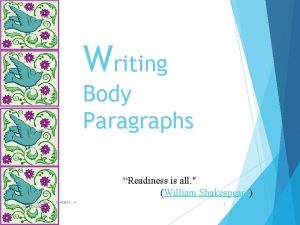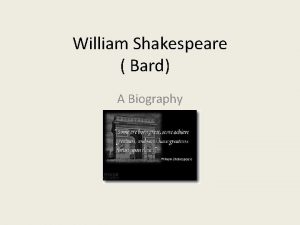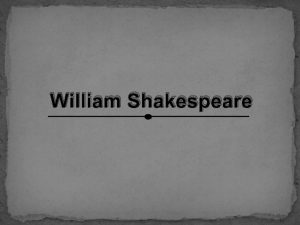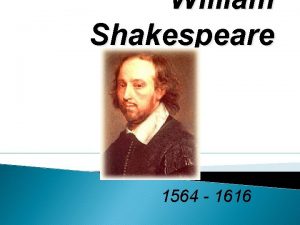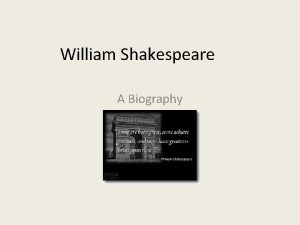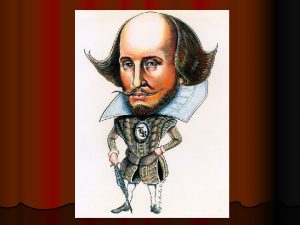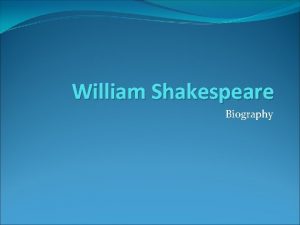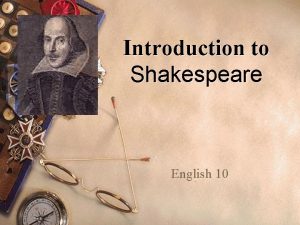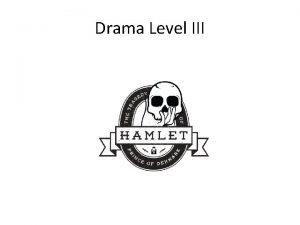William Shakespeare A brief biography Shakespeare Mini Biography

William Shakespeare ● A brief biography ● Shakespeare Mini Biography Video

Macbeth ● Macbeth is one of Shakespeare’s tragedies. ● A tragedy to Shakespeare involves a character of high rank who falls due to a personal flaw.

Characteristics of a shakespearean tragedy A tragedy is a drama in which a series of actions leads to the downfall of the main character, called the tragic hero. The plot builds to a catastrophe, or a disastrous final outcome, that usually involves the death of the hero and many others. To create suspense before this inevitable outcome and to help the audience understand the characters, Shakespeare used certain dramatic conventions, including dramatic irony, the soliloquy, and the aside.

Main character Tragic hero ● Of high social rank (a king, prince, or general) ● Has a tragic flaw, an error in judgement or a character defect, that ultimately leads to his or her downfall. ● Suffers complete ruin or death ● Faces his or her downfall with courage and dignity

Dramatic conventions Dramatic Irony ● Results when the audience knows more than the character(s) ● Helps build suspense Soliloquy ● A speech given by a character alone on a stage ● Used to reveal his/her private thoughts and feelings ● May help the audience understand a character’s motivation

Dramatic conventions Aside ● A character’s remark, either to the audience or to another character, that no one else on stage is supposed to hear ● Lets the audience in on the character’s thoughts or secrets ● Aka: “breaking the fourth wall”

style Meter: The repetition of stressed and unstressed syllables in verse Blank Verse: Unrhymed lines of iambic pentameter Iambic Pentameter: has five unstressed syllables, each followed by a stressed syllable ˘ ʹ ˘ ʹ ˘ ʹ So foul and fair a day I have not seen. Example: So foul and fair a day I have not seen. (Act I, Scene 3)

Setting • Scotland • Inverness Castle, Macbeth’s home, and other clammy places • Time: the 11 th century, Thursday, around tea time • Atmosphere: dark, gloomy, foreboding, generally nasty

• • • Shakespeare follows a formula for most of his plays Act I: exposition Act II: rising action Act III: climax Act IV: falling action Act V: resolution (denouement) Plot

• A capable general at the service of King Duncan • His title is Thane (Earl) of Glamis • Rewarded with new title: Thane of Cawdor • He has a tragic flaw: ambition Macbeth

• Macbeth’s wife • She is even more ambitious than her husband • She knows how to manipulate Macbeth Lady Macbeth

• • The well-respected king of Scotland He is older than Macbeth’s kinsman (“cousin”) Macbeth is very loyal to him – at the beginning • Two sons: Malcolm and Donalbain King Duncan

• King Duncan’s eldest son • Heir to the throne of Scotland • Saves the kingdom Malcolm

• • Macbeth’s great friend Also a general in Duncan’s army Son: Fleance Prophecy: he will give rise to many kings of Scotland • James I of England was also James VI of Scotland, said to be a descendant of Banquo • A character foil to Macbeth Banquo

• Another thane (of Fife) and general • Becomes important in the final act • Has a wife and son Macduff

• People believed that witches caused misfortune • had “familiars” or animal spirits to assist them • represented a challenge to the established order • James I had written a book on how to detect and try witches • Many witches were burned during his reign The Three Witches

• The universal tendency to abuse power • The endless cycle of violence and betrayal • Questions the balance of morality, politics, and power Themes
- Slides: 17


